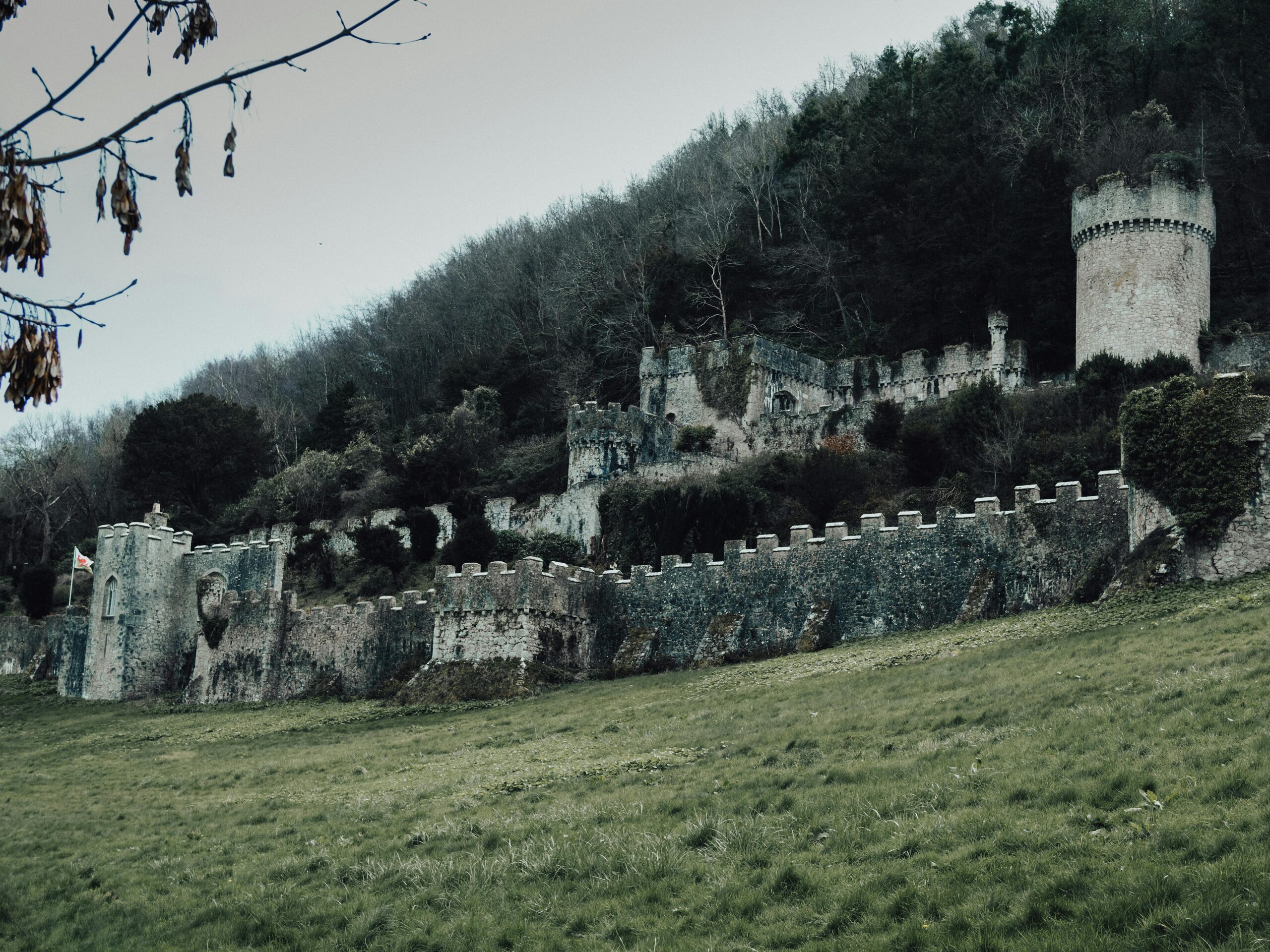Introduction: Understanding the Social Impact of Market & Industrial Revolutions
The social impact of Market & Industrial Revolutions was one of the most profound transformations in human history. These two major revolutions didn’t just change how goods were produced and traded—they also reshaped how people lived, worked, and related to each other.
From the late 18th to the 19th century, the world witnessed a dramatic shift from agrarian economies to industrial and capitalist systems. This period brought about not only economic growth but also widespread changes in social structures, urban life, and labor conditions.
Defining the Two Revolutions
- Maket Revolution: This refers to the transformation of the U.S. economy from localized, small-scale trade to a national commercial and capitalist system. It was fueled by innovations in transportation, communication, and banking.
- Industrial Revolution: Originating in Britain, this revolution involved the shift from hand production to machine-based manufacturing. It spread across Europe and North America, bringing technological innovations such as the steam engine, textile machinery, and mechanized agriculture.
Social Changes Beyond the Machines
While these revolutions are often discussed in terms of technology and economics, their social consequences were just as significant. Families were uprooted from rural villages to crowded urban centers. Gender roles shifted as women entered factory jobs. The class divide between industrial capitalists and wage workers grew, fueling political and labor movements.
Why This Topic Still Matters
Understanding the social impact of Market & Industrial Revolutions helps us see how economic changes ripple through every part of society. Issues like income inequality, labor rights, urbanization, and technological disruption can all trace their roots back to this pivotal period
Conclusion
The Market and Industrial Revolutions were more than economic shifts—they were powerful forces that reshaped the social fabric of entire nations. This blog series explores how these revolutions affected daily life, social classes, gender roles, and power dynamics, helping us better understand the foundations of the modern world.
Urbanization and the Shift from Rural Life
One of the most significant aspects of the social impact of Market & Industrial Revolutions was the rapid urbanization that took place across Europe and North America during the 18th and 19th centuries. As economies transitioned from agriculture to industry, people moved in large numbers from rural villages to growing cities in search of work, better wages, and new opportunities.
Why Urbanization Happened
Before the revolutions, most people lived in rural areas and worked in farming. However, technological advances—like the steam engine, textile machines, and mechanized agriculture—reduced the need for manual labor on farms. At the same time, factories in cities needed a large labor force. This push-and-pull effect drove rural populations into urban centers..
Living Conditions in Cities
The sudden population boom in cities led to overcrowding, poor sanitation, and unsafe housing. Many workers lived in cramped tenements with little ventilation or access to clean water. Disease spread rapidly, and life expectancy in some urban areas actually declined during this period.
Despite the challenges, city life also brought new conveniences like access to shops, schools, and transportation, gradually improving the standard of living over time.
Social and Cultural Shifts
Urbanization also led to new social dynamics. Diverse groups of people began living closer together, creating more interactions between classes, ethnicities, and ideologies. This mixing influenced the development of modern politics, education systems, and labor rights movements.
The growth of the working class and their collective experiences would later fuel significant reforms aimed at improving urban living conditions.
Conclusion
In summary, urbanization and the shift from rural life were central elements in the social impact of Market & Industrial Revolutions. They transformed not only where people lived but also how they lived, worked, and interacted with one another—laying the groundwork for modern urban society.
How Family Structures Were Transformed
The social impact of Market & Industrial Revolutions extended far beyond factories and financial systems—it deeply reshaped family structures across both rural and urban societies. As economies shifted from agrarian-based to industrial and market-driven models, the traditional family unit underwent significant changes in roles, responsibilities, and lifestyles.
From Home-Based Work to Wage Labor
Before the Industrial Revolution, most families worked together on farms or in home-based trades. This allowed for an integrated household economy where every member contributed to production. However, the rise of factories and urban jobs pulled men, women, and even children into the workforce—often at different hours and in different locations..
Gender Roles and Domestic Life
The Industrial Revolution reinforced and altered gender roles. While men were often employed in heavy labor or skilled trades, many women took on jobs in textile mills, domestic service, or garment factories. At the same time, middle-class ideals began promoting the concept of the woman as a homemaker, especially in wealthier households—creating a divide between working-class and middle-class family models.
Child Labor and Shifting Childhood Norms
One of the most controversial aspects of the social impact of Market & Industrial Revolutions was child labor. Children, often from poor families, were employed in dangerous conditions for long hours. This shift disrupted traditional views of childhood, which had been largely home- and education-focused in pre-industrial societies..
Urban Living and Smaller Families
Urbanization led to overcrowded living conditions, and the economic pressure of city life often resulted in smaller family sizes. With limited space and more expensive living costs, extended family households became less common. This marked the beginning of the modern nuclear family structure in many industrial societies.
Conclusion
The social impact of Market & Industrial Revolutions dramatically transformed the core unit of society: the family. Shifts in labor, gender roles, childhood, and living arrangements redefined what it meant to be a family in the modern world. Understanding these transformations provides crucial context for today’s ongoing social and ec
The Role of Women and Children in Industrial Workforces
The social impact of Market & Industrial Revolutions is perhaps most evident in how it changed the lives of women and children. As factories replaced farms and machines supplanted manual labor, industrial workforces needed large numbers of hands—and women and children became essential parts of this labor force.
Women in the Workforce: From Homes to Factories
During the early stages of industrialization, many women left their traditional roles in the home to work in textile mills, garment factories, and domestic service. This was especially common among working-class women who had few economic alternatives. Although their wages were significantly lower than men’s, women’s labor was critical to industrial productivity.
Women also faced grueling hours, unsafe conditions, and very limited rights in the workplace. Yet their growing presence outside the home began to challenge traditional gender norms and laid the groundwork for future movements toward women’s rights and suffrage.
The Burden of Child Labor
One of the harshest consequences of the social impact of Market & Industrial Revolutions was the widespread use of child labor. Children as young as six were employed in coal mines, textile factories, and other dangerous environments. Their small size made them ideal for certain tasks, but they often worked 10–14 hour days with little rest or protection.
These working conditions led to physical and psychological harm. It wasn’t until reformers and labor activists began pushing for change that laws were enacted to restrict child labor and require schooling.
Dual Burdens: Home and Factory
For many women—especially mothers—industrial labor meant juggling factory shifts with household duties. There was no reduction in domestic expectations, making their roles doubly demanding. The social impact of Market & Industrial Revolutions is clear here: it forced working-class women to balance the pressures of industrial work and traditional caregiving.
Seeds of Social Reform
The visibility of women and children in harsh industrial roles spurred social reform movements throughout the 19th and early 20th centuries. These movements helped pave the way for labor laws, education reforms, and early feminist advocacy—shaping the direction of modern labor and social justice efforts.
Conclusion
The social impact of Market & Industrial Revolutions was transformative for women and children. Their inclusion in the industrial workforce brought economic opportunities but also exposed them to exploitation and hardship. These experiences ultimately became a catalyst for critical social and legal reforms that continue to influence modern labor rights and gender equality.
The Emergence of the Working Class
One of the most significant social impacts of the Market & Industrial Revolutions was the rise of a new social group: the working class. As economies shifted from agriculture to manufacturing, millions of people moved from rural areas to cities in search of employment. This migration created an entirely new social structure centered around industrial labor.
What Defined the Working Class?
The working class was composed mainly of factory workers, miners, construction laborers, and others engaged in manual labor. Unlike the landowning elite or emerging middle class, the working class relied solely on wages for survival. Their work was often repetitive, physically demanding, and conducted in hazardous conditions.
This group lacked property, political power, and often, access to education. However, they became the backbone of industrial economies.
Daily Life and Struggles
Working-class families typically lived in overcrowded urban housing with poor sanitation. Long work hours—up to 14 or 16 hours a day—left little time for rest, let alone personal development. Health problems were common, and job security was nearly nonexistent.
Despite these hardships, the working class developed a strong sense of identity. Community bonds were often formed through shared struggles, religious institutions, and eventually, labor unions.
Labor Movements and Class Consciousness
The emergence of the working class was not just economic—it was also political. Workers began organizing to demand better wages, shorter workdays, and safer conditions. This marked the beginning of labor movements that would transform labor laws across the world.
Through strikes and collective bargaining, workers gained a stronger voice. Trade unions and socialist movements grew out of this energy, forcing governments to address inequality and workplace reform.
Long-Term Impacts
The social impact of Market & Industrial Revolutions through the formation of the working class cannot be overstated. This new social group not only powered industrial economies but also laid the foundation for modern social and labor rights. Over time, education, legal protections, and political representation improved for workers, though the struggle continues in many parts of the world today.
Conclusion
The emergence of the working class was a pivotal outcome of the social impact of Market & Industrial Revolutions. It reshaped societies, influenced political ideologies, and ignited movements that continue to shape labor relations and social structures today.
Social Mobility and the Rise of Reform Movements
The social impact of Market & Industrial Revolutions brought not only disruption but also opportunities for advancement. For the first time in history, individuals had the chance to move beyond their birth class. However, this new social mobility also exposed harsh inequalities, sparking widespread reform movements that reshaped society.
A New Path to Social Mobility
Before the industrial age, social status was largely determined by birth. Farmers remained farmers, and the wealthy passed on their privilege. The rise of factories, commerce, and urban centers opened new paths for people—especially men—to rise through hard work, entrepreneurship, and education.
Some individuals became merchants, factory owners, or skilled workers, improving their family’s economic situation. This economic mobility gave birth to a new middle class, which played a growing role in shaping modern capitalist societies.
Barriers to Mobility
Despite new opportunities, upward mobility was far from equal. Women, children, and minority groups often remained stuck in low-paying, dangerous jobs with no clear path to advancement. Poor education, unsafe housing, and low wages made it difficult for many to break the cycle of poverty.
This growing inequality created a visible divide between the working class and the emerging industrial elite, prompting calls for change.
The Rise of Reform Movements
In response to the injustices amplified by industrial capitalism, reform movements gained momentum. These movements aimed to:
-
Improve labor conditions
-
End child labor
-
Expand public education
-
Secure women’s rights
-
Address urban poverty and public health
Activists, writers, and religious leaders pushed for policies that would create a more just society.
Reformers played a crucial role in shaping public opinion and pressuring governments to implement social and labor reforms. Over time, their efforts led to minimum wage laws, workplace safety regulations, and voting rights expansion.
Lasting Effects of Reform Movements
The social impact of Market & Industrial Revolutions went far beyond economics. Reform movements helped build the foundations of modern democratic societies. They also set the stage for future civil rights struggles, unionization, and efforts toward social justice that are still ongoing today.
Conclusion
The rise in social mobility and the birth of reform movements were two of the most transformative effects of the social impact of Market & Industrial Revolutions. While not everyone benefited equally, the seeds of modern equality and human rights were planted during this dynamic period.
Class Tensions and Economic Inequality
The Rise of Unequal Wealth Distribution
The Market and Industrial Revolutions produced vast wealth, but it was far from equally shared. Factory owners, financiers, and industrialists accumulated great fortunes, while laborers worked long hours in unsafe conditions for meager pay.
The capitalist model rewarded business owners and investors, but often overlooked the welfare of the workers who made the system function. As a result, the social hierarchy became steeper and more rigid.
Living Conditions Reflect the Divide
Wealthy industrialists enjoyed the benefits of technological progress—spacious homes, new goods, and cultural advancements—while the poor faced crowded living conditions, poor sanitation, and high mortality rates.
These visible contrasts fueled resentment and a growing awareness among the working class of the injustices built into the system.
Growing Class Tensions
The harsh realities of industrial labor, combined with lack of representation or rights, led to protests, strikes, and the birth of the labor movement. Workers began demanding fair wages, shorter hours, and safer conditions.
Tensions sometimes erupted into violence, as seen in clashes between striking workers and factory owners or government forces. These moments revealed the depth of social unrest caused by unchecked inequality.
The Role of Reform in Addressing Inequality
While some governments and reformers responded to growing class tensions with progressive policies, change was often slow. Labor unions, social activists, and political reformers had to fight hard for protections that many workers enjoy today.
The social impact of Market & Industrial Revolutions laid the foundation for future policies on:
-
Minimum wage
-
Work hour limits
-
Child labor laws
-
Health and safety regulations
Conclusion
Class tensions and economic inequality were powerful side effects of the social impact of Market & Industrial Revolutions. While these revolutions brought progress and innovation, they also created social divides that demanded change. Understanding this tension is key to recognizing how modern labor rights and social reforms evolved—and why they remain relevant today.
Lasting Social Legacies of the Market & Industrial Revolutions
The social impact of Market & Industrial Revolutions continues to shape our world today. These historical transformations did more than change how goods were made—they restructured society itself. From class systems to gender roles, and from education to labor rights, the legacies of these revolutions are still deeply embedded in modern life.
1. Transformation of the Working Class
The emergence of a large, urban working class is one of the most profound legacies. Before the revolutions, most people lived in rural areas and worked in agriculture. Industrialization shifted this, concentrating people in cities where factory work was common.
This shift created new social dynamics, labor demands, and a need for workers’ rights—elements that continue to influence economic systems today.
2. Rise of Organized Labor and Reform
In response to poor working conditions, labor unions and reform movements gained momentum. These organizations fought for fair wages, safe work environments, and shorter hours, laying the foundation for modern labor laws.
This push for social justice became a key part of democratic development across the world.
3. Changing Roles of Women and Children
The social impact of Market & Industrial Revolutions also altered family roles. Women and children entered the workforce in large numbers—especially in textile mills and coal mines—though often under exploitative conditions. While these changes initially increased inequality, they eventually sparked greater awareness and advocacy for women’s and children’s rights.
These early struggles helped shape the modern women’s rights movement and laws against child labor.
4. Spread of Public Education
With the need for a literate and skilled workforce, public education systems expanded during and after the Industrial Revolution. Governments began to invest in schools, viewing education as essential to economic and social progress.
Today, access to education is considered a basic right, a legacy that began during this transformative period.
5. Urbanization and Modern City Life
As millions moved to cities for work, urban centers grew rapidly. This brought both opportunities and challenges—such as overcrowded housing, pollution, and health crises—but also the development of m
Much of today’s city planning and public health infrastructure was born from the demands of the industrial age.
Conclusion
The social impact of Market & Industrial Revolutions is far-reaching and permanent. They not only triggered economic changes but also rewrote the social fabric of entire nations. From the rise of labor rights to public education and urban living, the effects of these revolutions continue to define how societies function today.
Conclusion: What We Can Learn from These Social Changes
The social impact of Market & Industrial Revolutions offers valuable lessons that remain relevant in today’s rapidly changing world. These revolutions didn’t just transform economies; they reshaped societies in ways that teach us about adaptability, resilience, and the ongoing need for social progress.
Understanding the Importance of Social Adaptation
One key lesson is how societies must adapt to technological and economic changes. The Market and Industrial Revolutions disrupted traditional ways of life, forcing people to move from rural areas to cities and embrace new kinds of work. This reminds us today of the need to support communities through transitions brought on by technological advancements like automation and digitalization.
Recognizing the Value of Workers’ Rights and Social Justice
The struggles of workers, including women and children, during these revolutions highlight the importance of protecting labor rights and promoting social justice. Their fight for fair treatment led to lasting reforms that underpin many of today’s workplace standards. This history teaches us to remain vigilant in safeguarding these rights as economies evolve.
The Role of Education and Equal Opportunity
The expansion of public education during these periods shows that social progress is closely linked to access to learning and skills development. Education remains critical to empowering individuals to thrive amid economic changes—a lesson that continues to drive policy debates worldwide.
Emphasizing Sustainable Urban Development
Rapid urbanization brought both opportunities and challenges, from economic growth to overcrowding and pollution. The social impact of Market & Industrial Revolutions underscores the need for sustainable city planning and public health initiatives, lessons vital as global urban populations continue to rise.
Encouraging Social Mobility and Reform
Finally, these social changes show how reform movements can arise from inequalities, pushing society toward fairness and inclusion. The history of the Market and Industrial Revolutions inspires ongoing efforts to reduce economic disparities and improve social mobility.
In summary, the social impact of Market & Industrial Revolutions teaches us that while change can be disruptive, it also presents opportunities for growth and improvement. By learning from these past transformations, we can better navigate the social challenges and opportunities of our own time.
Certainly! Here’s high-quality content for the topic FAQ Social Impact of Market & Industrial Revolutions using the focus keyword. The style is clear, informative, and concise. I also included suggestions for image placement.
FAQ: Social Impact of Market & Industrial Revolutions
How did the Market & Industrial Revolutions affect family life?
Family roles changed drastically. Traditional rural family units often worked together on farms, but with industrialization, many family members worked in different jobs, often in factories. This shift altered family dynamics, social roles, and daily life patterns.
What role did women and children play during these revolutions?
Women and children became a significant part of the workforce, often in factories or as domestic laborers. This involvement was crucial for economic growth but also raised concerns about labor exploitation, leading to early labor laws and reforms.
How did the Industrial Revolutions contribute to the rise of the working class?
The growth of factories and industries created a new working class—people who sold their labor for wages rather than owning land or businesses. This class became central to urban life and social reforms.
Were there any social tensions caused by these revolutions?
Yes, the rapid social changes created tensions, particularly between different classes. Economic inequality increased, and poor working and living conditions led to strikes, protests, and the rise of labor unions demanding rights and reforms.
What lasting social legacies did the Market & Industrial Revolutions leave behind?
They laid the groundwork for modern urban societies, labor rights, public education, and social reforms. The revolutions also highlighted the need for balancing economic growth with social welfare.
How can understanding these social impacts help us today?
Studying the social impact of Market & Industrial Revolutions helps us grasp how economic and technological changes affect society. It reminds policymakers and communities to prioritize social equity and support during periods of change.








3487uw